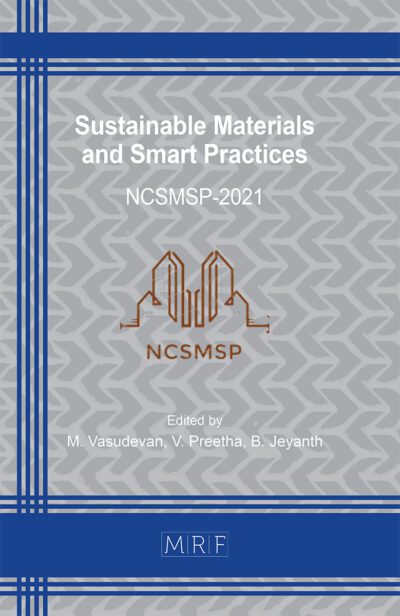Life cycle assessment of metal additive manufacturing processes: A comparative study of bound metal deposition and binder jetting technologies
Iacopo Bianchi, Archimede Forcellese, Luciano Greco, Massimiliano Pieralisi, Tommaso Verdini, Alessio Vita
Abstract. Additive Manufacturing (AM) has garnered significant industrial interest due to its ability to produce complex geometries, customize materials, and minimize material waste compared to traditional manufacturing processes. However, metal AM technologies are often associated with high energy consumption and, consequently, potential environmental impacts. Therefore, to enhance the sustainability of the sector, it is essential to conduct detailed impact analyses. This study presents a comparative Life Cycle Assessment (LCA) of two metal AM technologies: Bound Metal Deposition (BMD) and Binder Jetting (BJ). Components characterized by the same external bounding volume and increasing geometric complexity were investigated to identify the advantages and limitations of the two technologies for different applications.
In general, BJ emerged as the more sustainable technology compared to BMD across all geometric configurations. The environmental impact reduction achieved with BJ increased with geometric complexity, ranging from 36% to 51%. This is mainly due to lower printing energy and more efficient material use, such as the ability to print without supports in the powder bed. An increase in part complexity resulted in lower material use and reduced environmental impacts for both scenarios. On the other hand, impacts per kg of produced components strongly increase with parts complexity.
Keywords
LCA, Metal Additive Manufacturing, Sustainability, 3D Printing
Published online 5/7/2025, 11 pages
Copyright © 2025 by the author(s)
Published under license by Materials Research Forum LLC., Millersville PA, USA
Citation: Iacopo Bianchi, Archimede Forcellese, Luciano Greco, Massimiliano Pieralisi, Tommaso Verdini, Alessio Vita, Life cycle assessment of metal additive manufacturing processes: A comparative study of bound metal deposition and binder jetting technologies, Materials Research Proceedings, Vol. 54, pp 2474-2484, 2025
DOI: https://doi.org/10.21741/9781644903599-267
The article was published as article 267 of the book Material Forming
![]() Content from this work may be used under the terms of the Creative Commons Attribution 3.0 license. Any further distribution of this work must maintain attribution to the author(s) and the title of the work, journal citation and DOI.
Content from this work may be used under the terms of the Creative Commons Attribution 3.0 license. Any further distribution of this work must maintain attribution to the author(s) and the title of the work, journal citation and DOI.
References
[1] K.R. Chatzipanagiotou, D. Antypa, F. Petrakli, A. Karatza, K. Pikoń, M. Bogacka, N. Poranek, S. Werle, E. Amanatides, D. Mataras, E.P. Koumoulos, Life Cycle Assessment of Composites Additive Manufacturing Using Recycled Materials, Sustainability 2023, Vol. 15, Page 12843 15 (2023) 12843. https://doi.org/10.3390/SU151712843
[2] S. Volpe, V. Sangiorgio, F. Fiorito, H. Varum, Overview of 3D construction printing and future perspectives: a review of technology, companies and research progression, Https://Doi.Org/10.1080/00038628.2022.2154740 (2022). https://doi.org/10.1080/00038628.2022.2154740
[3] L. Yang, K. Hsu, B. Baughman, D. Godfrey, F. Medina, M. Menon, S. Wiener, Additive Manufacturing of Metals: The Technology, Materials, Design and Production, Springer International Publishing, Cham, 2017. https://doi.org/10.1007/978-3-319-55128-9
[4] S. Mondal, Additive Manufacturing of Polymers for Biomedical Applications, Additive Manufacturing Processes in Biomedical Engineering (2022) 99–115. https://doi.org/10.1201/9781003217961-6
[5] B. DeBoer, N. Nguyen, F. Diba, A. Hosseini, Additive, subtractive, and formative manufacturing of metal components: a life cycle assessment comparison, International Journal of Advanced Manufacturing Technology 115 (2021) 413–432. https://doi.org/10.1007/S00170-021-07173-5/TABLES/9
[6] A. Mecheter, F. Tarlochan, M. Kucukvar, A Review of Conventional versus Additive Manufacturing for Metals: Life-Cycle Environmental and Economic Analysis, Sustainability 2023, Vol. 15, Page 12299 15 (2023) 12299. https://doi.org/10.3390/SU151612299
[7] E. Nadalini, F. Badurdeen, G. Campana, Economic and Environmental Sustainability Performance of Additive Friction Stir Deposition: A Comparative Analysis, Proceedings of the Conference on Production Systems and Logistics (2024) 864–872. https://doi.org/10.15488/17773
[8] A.A. Ahmed, M.A. Nazzal, B.M. Darras, A. Eltaggaz, I.M. Deiab, Comparative sustainability assessment of powder bed fusion and solid-state additive manufacturing processes: The case of direct metal laser sintering versus additive friction stir deposition, Sustainable Materials and Technologies 39 (2024) e00858. https://doi.org/10.1016/J.SUSMAT.2024.E00858
[9] P. Forcellese, T. Mancia, M. Simoncini, T. Bellezze, Characterization of Microstructure and Localized Corrosion Resistance of Heat-Treated 17-4 PH Stainless Steel Fabricated by Material Extrusion, Metals 2025, Vol. 15, Page 137 15 (2025) 137. https://doi.org/10.3390/MET15020137
[10] X. Xu, S. Meteyer, N. Perry, Y.F. Zhao, Energy consumption model of Binder-jetting additive manufacturing processes, Int J Prod Res 53 (2015) 7005–7015. https://doi.org/10.1080/00207543.2014.937013
[11] A. Greco, P. Manco, M.B. Russo, S. Gerbino, Complexity-driven product design: part 1—methodological framework and geometrical complexity index, International Journal on Interactive Design and Manufacturing 18 (2023) 5441–5456. https://doi.org/10.1007/S12008-023-01426-1/TABLES/10
[12] T. Bellezze, A. Forcellese, P. Forcellese, T. Mancia, M. Simoncini, Effect of printing orientation on mechanical properties of components in stainless steel obtained using the Bound Metal Deposition technology, Procedia CIRP 118 (2023) 694–698. https://doi.org/10.1016/J.PROCIR.2023.06.119
[13] I. Bianchi, A. Forcellese, P. Forcellese, T. Mancia, C. Mignanelli, M. Simoncini, T. Verdini, Effect of Printing Orientation Angle and Heat Treatment on the Mechanical Properties and Microstructure of Binder-Jetting-Printed Parts in 17-4 PH Stainless Steel, Metals 2024, Vol. 14, Page 1220 14 (2024) 1220. https://doi.org/10.3390/MET14111220
[14] J.M.C. Azevedo, A. CabreraSerrenho, J.M. Allwood, Energy and material efficiency of steel powder metallurgy, Powder Technol 328 (2018) 329–336. https://doi.org/10.1016/j.powtec.2018.01.009
[15] Live Studio, (n.d.). https://fab.desktopmetal.com/signin (accessed January 2, 2025)
[16] K. Raoufi, K.R. Haapala, T. Etheridge, S. Manoharan, B.K. Paul, Cost and environmental impact assessment of stainless steel microscale chemical reactor components using conventional and additive manufacturing processes, J Manuf Syst 62 (2022) 202–217. https://doi.org/10.1016/J.JMSY.2021.11.017
[17] B. Iacopo, D.P. Valerio, M. Tommaso, P. Massimiliano, V. Alessio, Environmental impacts assessment of Bound Metal Deposition 3D printing process for stainless steel, Procedia CIRP 105 (2022) 386–391. https://doi.org/10.1016/J.PROCIR.2022.02.064
[18] F. Borda, G. Ingarao, G. Ambrogio, F. Gagliardi, Cumulative energy demand analysis in the current manufacturing and end-of-life strategies for a polymeric composite at different fibre-matrix combinations, J Clean Prod 449 (2024) 141775. https://doi.org/10.1016/J.JCLEPRO.2024.14177














